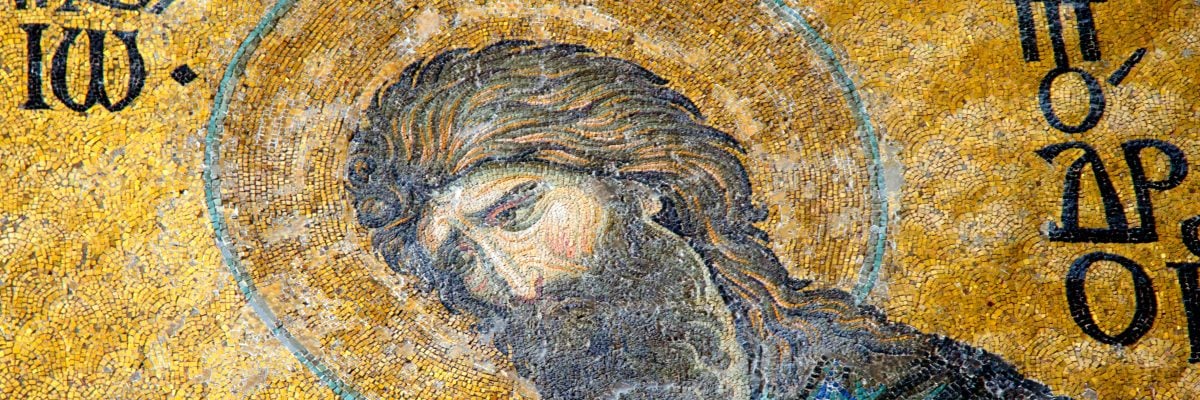
Homily for the Second Sunday of Advent, Year C
[T]he word of God came to John the son of Zechariah in the desert.
John went throughout the whole region of the Jordan,
proclaiming a baptism of repentance for the forgiveness of sins.— Luke 3:2-3
Who is the saint most venerated in our religion? Well, of course we would say it is the Blessed Mother, and then after her St. Joseph, and then perhaps St. Anthony of Padua or St. Thérèse or St. Francis or St. Jude.
Even so, there is one saint who used to be the most venerated after, or even along with, Our Lady. Today, however, except in the sacred liturgy, he does not receive the popular acclaim and devotion he did in the first centuries of our Christian era.
Of St. John the Baptist, our Savior declared something more than canonization: he said, “Of men born of woman, none is greater than John the Baptist.” And in the prologue to the Gospel of St. John, we read that although the Baptist was not himself the light of the world, even so, he was sent by God to bear witness to Christ, “that all might believe through him.” Imagine, all who have believed in Christ have believed through John the Baptist!
The gifts that the Lord gives to his saints are permanent and perfect, and so we can be sure that the role he gave John the Baptist to prepare the way of the Lord was not lost after his martyrdom and entry into heaven at the ascension of his cousin and friend Jesus Christ. Pope St. John XXIII even opined in his homily on Ascension Sunday in 1962 that John the Baptist was among those who came out from the tombs at the time of Our Lord’s death and resurrection, and that we may piously believe that he, like Our Lady, is in heaven body and soul!
The Church dedicates the Second Sunday of Advent to the Lord’s Forerunner, and it also celebrates a feast for his birth, along with the births of Jesus and Mary. No other saints are commemorated on their birthday, but as St. Augustine explains, the Baptist was freed from original sin in his mother’s womb at the greeting of Mary. The Church also celebrates each year his martyrdom by beheading. In the Byzantine rite there is a third feast, often represented in icon cycles, celebrating his conception.
In the Roman Canon or first Eucharistic Prayer, Our Lady leads one list of saints before the consecration and John leads another after, just like those icons that show Mary on one side and John on the other of the enthroned Savior, leading the other saints and they intercede for us.
In the texts of the extraordinary form of the Mass, he is also mentioned in the confession and offertory prayers, and he is constantly commemorated in the Byzantine rite in the offertory (a host particle is even reserved for him, representing him at each Eucharist!) and he is invoked in the blessing at the end of this wonderful liturgy.
Even more, the first church of Christendom, the basilica of the Most Holy Savior, St. John Lateran, carries the names of the Lord and his very holy cousin. This is the cathedral of the pope, the “mother and head of all the churches.”
And these are only the examples that come to me from habitual memory. If one were to study the ancient liturgy and devotion of the churches of Christ spread throughout the world, many, many more would be found.
All this is just to encourage us to rediscover and to notice how deeply the Lord loves his cousin and how the Church reflects this love in its worship. It is obvious that if we have recourse to the intercession of John the Baptist we will receive many graces of faith and perseverance and devotion to the Savior.
Many of Our Lord’s apostles and disciples came to him from following John the Baptist; may his merits and prayers and glorious example draw us to Jesus, the light of the world!



